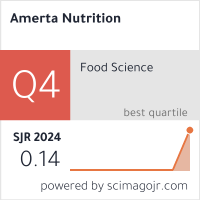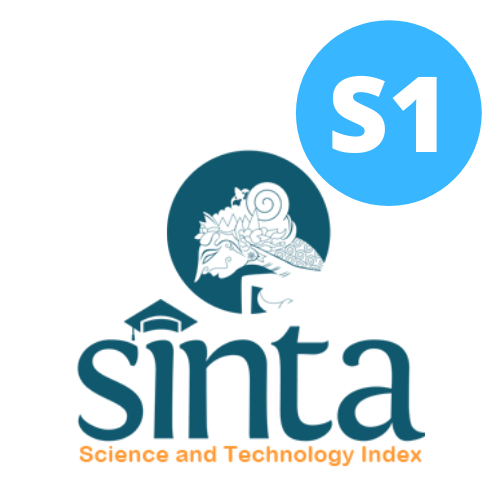Anaemia is Associated with Dietary Intakes and Physical Fitness among Female Students Studying Nutrition in Universitas Negeri Surabaya, Indonesia
Background: Anaemia is a common condition among young adults.
Objectives: This study aimed to investigate the prevalence of anaemia among female college students studying Nutrition and explore the potential connections between dietary habits, anthropometric measurements, and physical activity levels.
Methods: A cross-sectional study was conducted among 113 female students who enrolled in Programme Study of Nutrition. Dietary data including intakes of energy, iron, folate, B12, vitamin C, and Dietary Diversity Score (DDS) were assessed using non-consecutive 3x24 hours food records. The assessment of physical fitness was based on Harvard Step Test whereas anthropometric profiles including body mass index, mid-upper arm circumference, and body fat percentage. A capillary haemoglobin was used to collect anaemia status data.
Results: Among our respondents, we found that anaemia prevalence was 39%. Non-anaemic and anaemic respondents showed no significant difference in anthropometric profiles, intakes of energy, iron, folate, vitamin B12, and vitamin C, nor in DDS. However, we found that the non-anaemic group consuming a higher intake of fish and meat (p<0.01) but lower in legume, nut, seed (p<0.05), and dark-leafy vegetables (p<0.05).
Conclusions: this study emphasises the high prevalence of anaemia among female college students studying health major. The study suggested that increasing intake of meat and fish could be a promising approach to combat anaemia. Future studies examining tailored dietary plans and fitness programmes to combat anaemia are warranted.
World Health Organization. World health statistics 2023: monitoring health for the SDGs [Internet]. Vol. 27. 2023. 179–187 p. Available from: https://www.who.int/publications/book-orders.
Jawed S, Tariq S, Tariq S, Kamal A. Frequency of nutritional anemia among female medical students of Faisalabad. Pakistan J Med Sci. 2017;33(2):398–403.
Kannan B, Ivan EA. Prevalence of anemia among female medical students and its correlation with menstrual abnormalities and nutritional habits. Int J Reprod Contraception, Obstet Gynecol. 2017;6(6):2241.
Tang P, Wang H. Regulation of erythropoiesis: emerging concepts and therapeutic implications. Hematol (United Kingdom). 2023;28(1).
Chan LN, Mike LA. The science and practice of micronutrient supplementations in nutritional anemia: An evidence-based review. J Parenter Enter Nutr. 2014;38(6):656–72.
Visser M, Van Zyl T, Hanekom SM, Baumgartner J, Van Der Hoeven M, Taljaard-Krugell C, et al. Associations of dietary diversity with anaemia and iron status among 5- To 12-year-old schoolchildren in South Africa. Public Health Nutr. 2021;24(9):2554–62.
Agustina R, Nadiya K, El Andini A, Setianingsih AA, Sadariskar AA, Prafiantini E, et al. Associations of meal patterning, dietary quality and diversity with anemia and overweight-obesity among Indonesian schoolgoing adolescent girls in West Java. PLoS One [Internet]. 2020;15(4):1–19. Available from: http://dx.doi.org/10.1371/journal.pone.0231519
Sepriadi, Eldawaty. The Contribution of Hemoglobin Levels to Students’ Physical Fitness. J Phys Educ Sport Heal Recreat [Internet]. 2019;8(2):82–90. Available from: http://journal.unnes.ac.id/sju/index.php/peshr
Dolan LB, Gelmon K, Courneya KS, Mackey JR, Segal RJ, Lane K, et al. Hemoglobin and aerobic fitness changes with supervised exercise training in breast cancer patients receiving chemotherapy. Cancer Epidemiol Biomarkers Prev. 2010;19(11):2826–32.
Tkachenko S. The inner reaction dynamics of 13-14 year-old girls to physical load in the process of harvard step test performance. J Phys Educ Sport. 2019;19(1):162–5.
Khurde N, Jibhkate A, Udhan V, Khurde S. A gender-based comparative cross-sectional study of physical fitness index using Harvard’s step test in the medical students of Western India. Natl J Physiol Pharm Pharmacol. 2021;11(0):1.
FAO-UN. Guidelines for measuring household and individual dietary diversity [Internet]. Fao. 2010. 1–60 p. Available from: www.foodsec.org
Tesema AK, Liyew AM, Alem AZ, Yeshaw Y, Tesema GA, Teshale AB. Spatial distribution and determinants of undernutrition among reproductive age women of Ethiopia: A multilevel analysis. PLoS One [Internet]. 2021;16(9 September):1–15. Available from: http://dx.doi.org/10.1371/journal.pone.0257664
Kemenkes RI. Riset Kesehatan Dasar. Science. 2013.
Septiani S, Irfiyanti I, Hai TT, Khusun H, Wiradnyani LA, Kekalih A, et al. Food Insecurity Associated with Double-Burden of Malnutrition among Women in Reproductive Age in Ciampea Sub-district, Bogor, West Java. Indones J Public Heal Nutr. 2021;1(2):21–31.
Hossain MI, Rahman A, Uddin MSG, Zinia FA. Double burden of malnutrition among women of reproductive age in Bangladesh: A comparative study of classical and Bayesian logistic regression approach. Food Sci Nutr. 2023;11(4):1785–96.
Unicef. Undernourished and overlooked. 2023.
Hakami W, Dobie G, Alneami KA, Shaabi M, Essawi K, Saboor M, et al. Assessing Nutritional Anemia Among University Students in Jazan, Saudi Arabia: A Public Health Perspective. J Blood Med. 2024;15(January):51–60.
World Health Organization. Guideline on haemoglobin cutoffs to define anaemia in individuals and populations. Geneva; 2024.
Imai E, Nakade M. Fish And Meat Intakes and Prevalence of Anemia Among the Japanese Elderly. Asia Pac J Clin Nutr. 2019;28(2):276–84.
Jackson J, Williams R, McEvoy M, MacDonald-Wicks L, Patterson A. Is higher consumption of animal flesh foods associated with better iron status among adults in developed countries? A systematic review. Nutrients. 2016;8(2):1–27.
Liberal Â, Pinela J, Vívar-Quintana AM, Ferreira ICFR, Barros L. Fighting iron-deficiency anemia: Innovations in food fortificants and biofortification strategies. Foods. 2020;9(12):1–19.
Chatterjee R, Chowdhury R, Dukpa P, Thirumdasu R. Iron Fortification in Leafy Vegetables: Present Status and Future Possibilities. Innovare J Agri Sci. 2016;4(4):1–3.
Hamlin F, Latunde-Dada GO. Iron bioavailibity from a tropical leafy vegetable in anaemic mice. Nutr Metab. 2011;8:1–7.
Piskin E, Cianciosi D, Gulec S, Tomas M, Capanoglu E. Iron Absorption: Factors, Limitations, and Improvement Methods. ACS Omega. 2022;7(24):20441–56.
Risma R, Hadju V, Zulkifli A, Russeng SS, Indarty A, Salam A, et al. Intercorrelations Among Hemoglobin Level, Physical Fitness, and Cognitive Score in Adolescent Girls: a Cross sectional Study in Banggai District, Indonesia. Pharmacogn J. 2024;16(2):1–5.
Lai SW, Tsai KZ, Lin YP, Liu PY, Lin YK, Chang PY, et al. Association of red blood cell size and physical fitness in a military male cohort: The CHIEF study. Scand J Med Sci Sport. 2021;31(2):295–302.
Yokoi K, Konomi A. Iron deficiency without anaemia is a potential cause of fatigue: Meta-analyses of randomised controlled trials and cross-sectional studies. Br J Nutr. 2017;117(10):1422–31.
Mayasari NR, Hu TY, Chao JCJ, Bai CH, Chen YC, Huang YL, et al. Associations of the pre-pregnancy weight status with anaemia and the erythropoiesis-related micronutrient status. Public Health Nutr. 2021;24(18):6247–57.
Copyright (c) 2025 Amerta Nutrition

This work is licensed under a Creative Commons Attribution-ShareAlike 4.0 International License.
AMERTA NUTR by Unair is licensed under a Creative Commons Attribution-ShareAlike 4.0 International License.
1. The journal allows the author to hold the copyright of the article without restrictions.
2. The journal allows the author(s) to retain publishing rights without restrictions
3. The legal formal aspect of journal publication accessibility refers to Creative Commons Attribution Share-Alike (CC BY-SA).
4. The Creative Commons Attribution Share-Alike (CC BY-SA) license allows re-distribution and re-use of a licensed work on the conditions that the creator is appropriately credited and that any derivative work is made available under "the same, similar or a compatible license”. Other than the conditions mentioned above, the editorial board is not responsible for copyright violation.








































